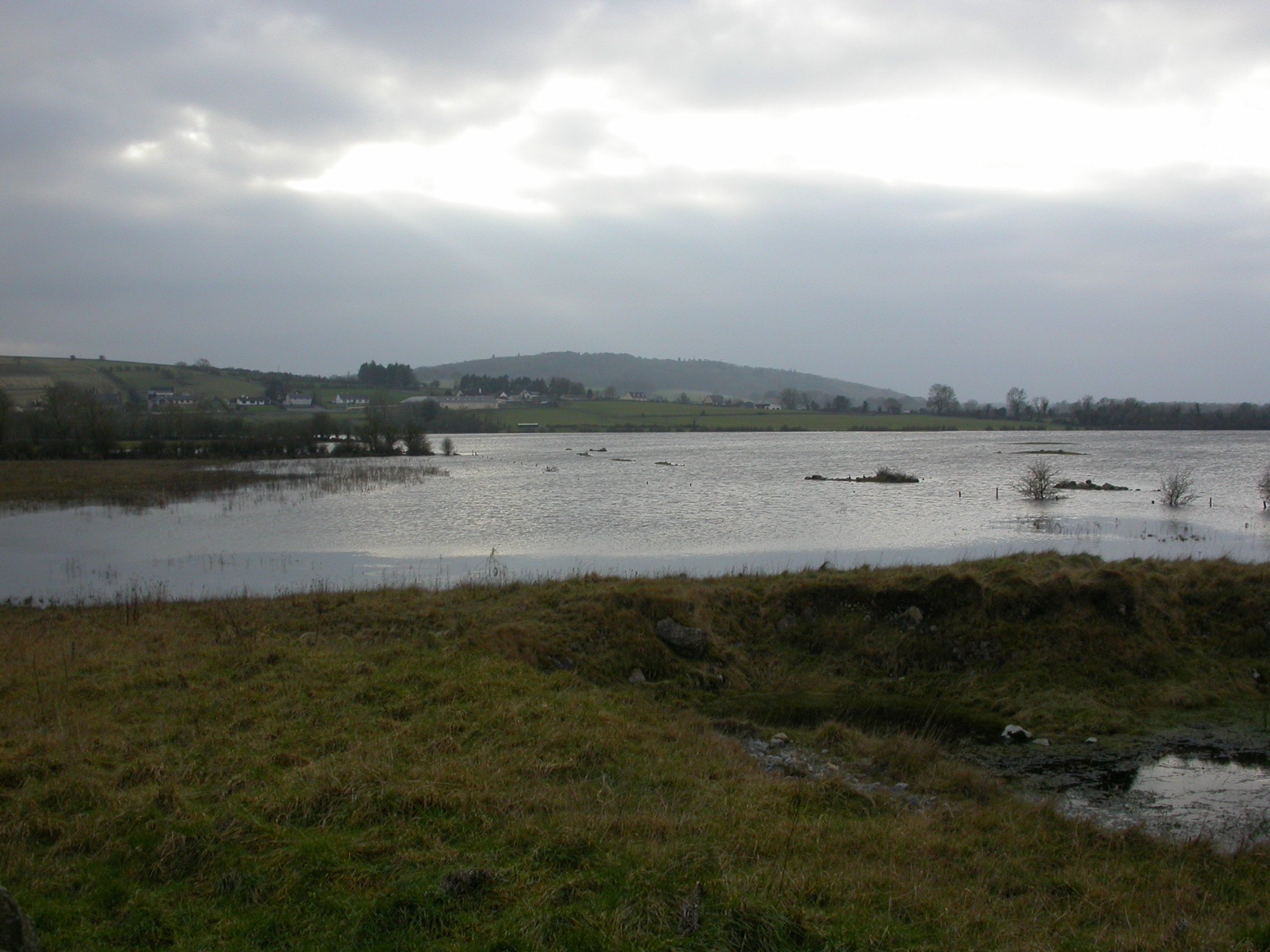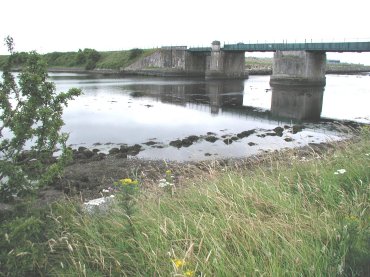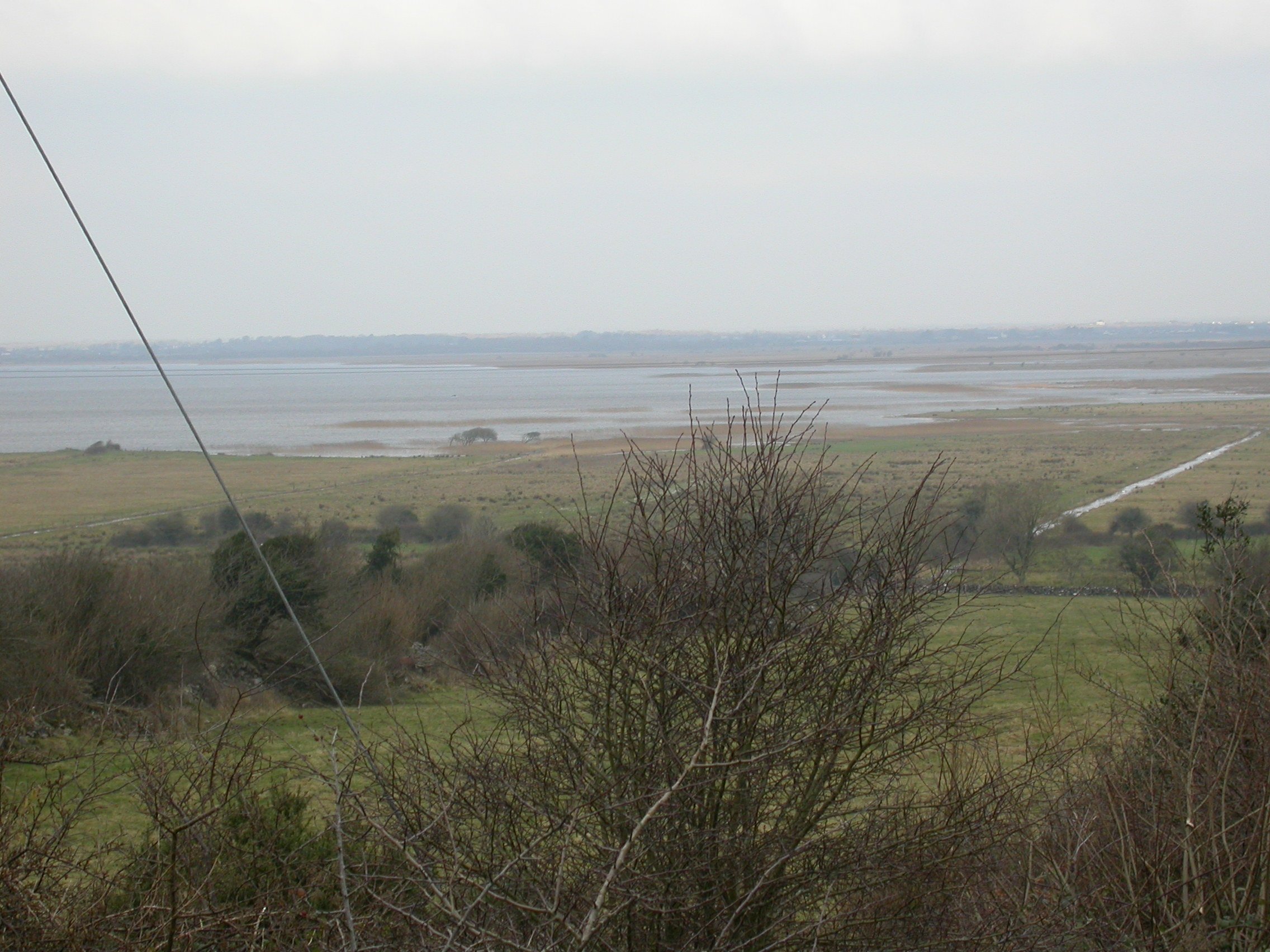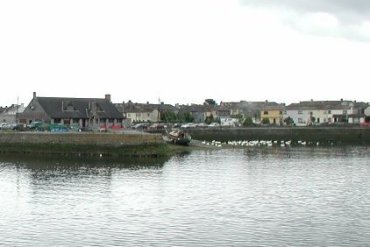To view a map showing the situation of selected sites of birding interest, click here.
|
County Galway can boast a wealth of birding habitats, including sea coast, lakes, rivers, bays, mountain, bog and woodland. A selection of the best accessible sites are highlighted below (click on the links to see details):
|
|
BELCLARE TURLOUGH: A natural turlough situated 5km west of Tuam, the site is at its best in winter when there is most water. There is a hide (maintained by BirdWatch Galway). Go north on the minor road off the L98 for about 1.2 km to reach the hide on the left hand side of the road. Whooper Swan and small numbers of Bewick's Swan and Greenland White-fronted Goose are regular. Wigeon, Teal, Pochard, Tufted Duck and Shoveler can also be seen. Waders found include Golden Plover, Lapwing, Curlew, Dunlin and Snipe, whilst Long-billed Dowitcher has been recorded once. The abundant waterfowl attract raptors like Sparrowhawk, Kestrel, Merlin and Peregrine.
|

M384500, OS Discovery Series No. 46
|
|

M308256, OS Discovery Series No. 45
|
LOUGH ATALIA: This is a narrow finger-like inlet in Galway Bay. The entrance is in the heart of the City docks. The lough is adjacent to both Galway Railway Station and the Galway-Dublin Road, with unrestricted access to most of the site. Like the rest of Galway Bay, the Lough is best from Autumn to Spring. With a limited tidal range, timing is not critical for this site. During winter Little Grebe and duck like Wigeon, Teal, Shelduck, Goldeneye and Red-breasted Merganser can be seen at close range. Of special note is the winter Scaup flock, which may number 50 birds. Commoner waders like Redshank, Greenshank, Curlew, Oystercatcher and Lapwing can be expected, whilst Kingfisher and Stonechat also occur.
|
|
LOUGH CORRIB: This is the second largest lake in Ireland (after Lough Neagh), 45 km long and 21 km at its widest point with an area of 180 sq. km (17,000 Ha). It is divided into two distinct regions by the underlying geology. The north-western region of the lake overlies hard acidic rocks like granites and schists; it is by far the deepest part. The south-eastern arm of the lough is quite shallow and overlies limestone; this is the part which is best for birds. The best viewing points are accessible from Moycullen (M245335, 7 miles from Galway on the N59 Galway-Clifden Road) in the west, from Angliham marble quarries (M292304) in the east and from Mount Ross (M260424) on the northern side of the 'neck' separating the south-eastern arm from deeper water. Breeding birds include Tufted Duck, Red-breasted Merganser, Pochard, Gadwall (best seen at Mount Ross in Winter), Shoveler, Common Scoter, Great-crested Grebe, Black-headed and Common Gulls, Common and Arctic Tern, Lapwing, Common Sandpiper, Redshank and Ringed Plover. In Winter there are large concentrations of Pochard (international importance), Tufted Duck (national importance) and Coot (national importance), with large flocks of Lapwing and Golden Plover also present alongside smaller numbers of other duck species, Whooper Swan and Greenland White-fronted Geese. The area of bog and rough vegetation at Curraghmore (M323333; often referred to locally as the Curraghline), just to the north of the Bridge over the River Clare and between the lake and the N84 Galway-Headford Road, is good in Winter for Whooper Swan, Whitefronts and raptors like Peregrine, Merlin and Hen Harrier.
|

OS Discovery Series Nos. 45 & 38 and 'Corrib Country: A Rambler's Guide & Map', Tír Eolas.
|
|

M303246, OS Discovery Series No. 45
|
NIMMO'S PIER: Another site in the centre of Galway City, the Pier is situated in the famous Claddagh (the site of an old fishing village) across the River Corrib from the old City. Nimmo's Pier is best in winter and Low Tide is best for both gulls and waders. The Claddagh Basin is well-known for its large herd of Mute Swans, but it is probably for its gulls that Nimmo's Pier is visited by most birders. Each Winter 1 to 3 Ring-billed Gull are resident near to the slipway, whilst Iceland, Glaucous and Mediterranean gulls are regularly seen and Little Gull are often in the area. Both Ross's Gull and Bonaparte's Gull have been seen in recent years. The beach nearby supports waders and Pale-bellied Brent Goose, auks and Great Northern Diver are seen in the Bay. Otters are occasionally seen.
|
© BirdWatch Galway 2009
|

